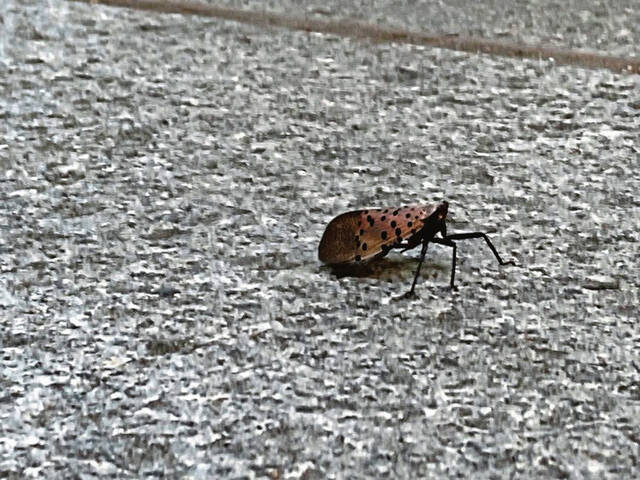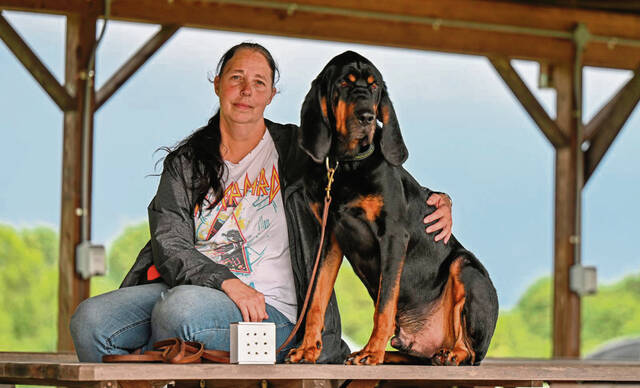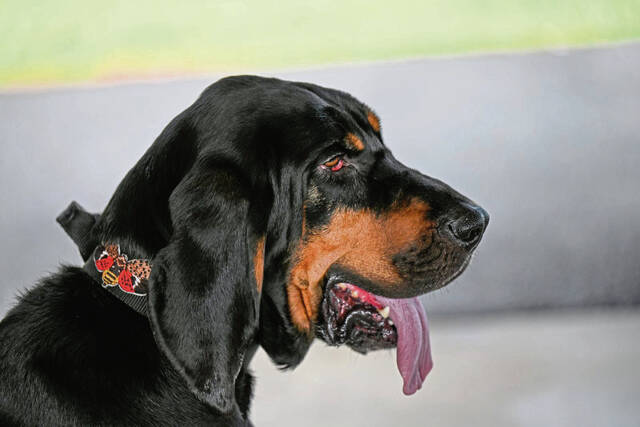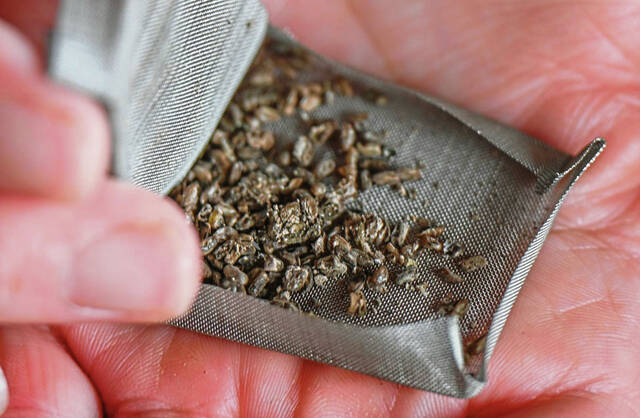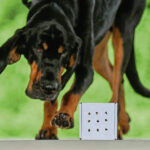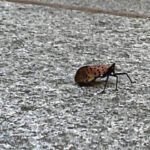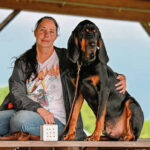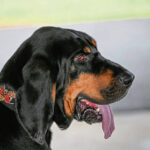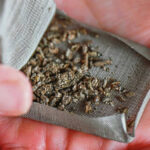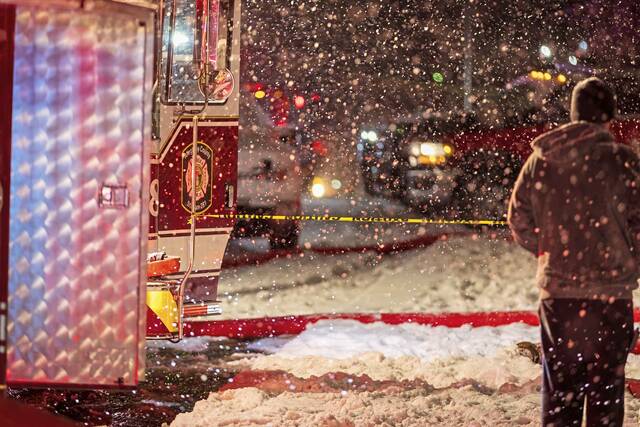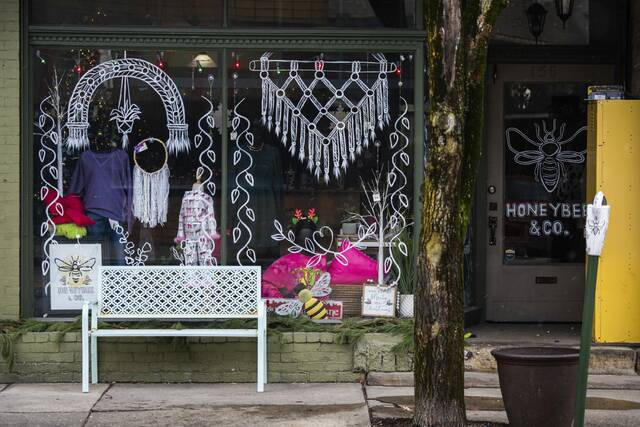Humans can be trained to identify the eggs of the invasive spotted lanternfly. But it’s not easy.
The mottled gray color of the egg masses often matches the areas where they’re laid, or they’re located high in a tree or some other hidden location.
Suffice it to say, no human being will ever be able to sniff out egg deposits by smell alone.
Dogs, on the other hand, can be trained to sniff out nearly anything.
They’ve been trained to detect cancer cells in human tissue samples and water treatment chemicals in soil to identify underground water leaks.
So it didn’t seem like much of a stretch to train them to locate spotted lanternfly egg masses, which is what research scientists from Virginia and Texas started doing.
Some of the people certified in the training live in Western Pennsylvania, including Joyce Perrone of Apollo.
“What these animals can do is just phenomenal,” said Perrone, who had already undergone other types of scent training with Arlo, her German shepherd, through the National Association of Canine Scent Work.
“I’ve been a trainer the past two years (at the Westmoreland County Obedience Training Club) and with my former dog I trained and competed for about seven years.” she said. “When researchers at Virginia Tech wanted to work on the spotted lanternfly, they reached out to NACSW to see if the dogs could be trained to find egg masses.”
They can.
A dog’s nose possesses up to 300 million olfactory receptors — humans only have 300-400 of them — and in addition to being trained to sniff out drugs, bombs and cadavers, their owners have increasingly gotten them involved in conservation-related nose work. Perrone and others underwent training at the Westmoreland County Obedience Training Club in Salem Township.
In fact, in the early days of the spotted lanternfly’s invasion of Pennsylvania, state agriculture officials trained several dogs to sniff out the egg masses, but they were not able to keep pace with the insect’s spread.
That got researchers thinking about recruiting pet owners to help out.
Sally Dickinson, who recently earned her Ph.D. at Virginia Tech, said researchers at the school partnered with educators at Texas Tech University to study whether pet dogs could be trained to detect both lanternfly eggs as well as powdery mildew, a common deadly fungal disease affecting a wide range of plants.
“We needed a species that would work well with the citizen-science aspect of our study,” Dickinson said. “Spotted lanternflies were already in the media, and we knew we could get buy-in from citizens to look for something they’d actually heard of.”
With a four-year, $475,000 grant from the U.S. Department of Agriculture-Agriculture and Food Research Initiative, Dickinson, Erica Feuerbacher, an associate professor of applied animal welfare and behavior in Virgina Tech’s School of Animal Sciences, and Mizuho Nita, a Virginia Cooperative Extension specialist and an associate professor at Tech’s School for Plant and Environmental Sciences, partnered with researchers at Texas Tech to reach out and begin recruiting citizen-scientists with dogs to train.
Teams span the country
Ultimately, 182 teams from across the U.S. were selected and given devitalized — or nonhatching — egg masses as training aids. Participants trained their dogs at home or in small groups, with oversight from a designated local trainer.
The study showed that in indoor tests, trained dogs were able to correctly locate and identify egg masses more than 80% of the time. In outdoor tests, that number dropped closer to 60%, according to the study.
Some dogs, such as Milissa DeFloria’s 5-year-old bloodhound Creedmoor, are literally built for this kind of work. The mass of skin folds on the breed’s face and its big floppy ears are designed to funnel scent particles into its nose.
DeFloria, a Saltsburg resident, regularly does scent training at Seanor Farm Park in New Alexandria.
“I started out training dogs to locate cavaders,” DeFloria said. “My previous bloodhound was a very, very strong tracker. But this (work) gives a dog a little more freedom to roam.”
DeFloria also takes part in annual lanternfly research headed by Saint Vincent College professor Michelle Duennes, collecting male and female lanternflies from the same locations each year to determine how the species is evolving in Pennsylvania.
“I’ve had a few friends with farms who’ve asked me to come help them try and figure out where their lanternflies are coming from,” she said. “This helps with the other training that we already do, and it helps build the trust that’s so important between a trainer and dog.”
The owners of four dogs trained through the pilot program have partnered with Cleveland Metroparks in Ohio to comb through the city’s park land, locating and destroying any egg masses they sniff out.
Perrone has not made any official partnerships in Pennsylvania, but has identified egg masses on birch trees in her own yard.
“Particularly on houses with rough paneling, they love to put their eggs on that, or in basement window wells,” she said. “We’ve found them in a lot of different places.”
Perrone said after the training, “they kind of left it up to us to go out and find places to search.”
“I thought they would have kind of a central area where people could call and they’d route search requests that way, but it didn’t happen here in Pennsylvania,” she said.
Dickinson said she’s hopeful that future grant funding could aid in the ongoing development of an online tool or app that would work the way Perrone described.
“We want to connect these trained resources with the people who need them,” she said. “We’d love to find a way to get it up and running as a full-on network, but as a research institution, I don’t know if we’re the group to do that.”
Problem in Western Pennsylvania
One place where egg-sniffing dogs could do a lot of good is Pennsylvania’s grape and wine industry, which has taken heavy damage from the invasive lanternflies. But Perrone said dog owners can be a little hesitant to bring their animals to a vineyard.
“Lanternflies loves them, but grapes are also very toxic to lot of dogs,” she said. “A lot of us won’t want to just bring our dogs and wander through that type of place.”
Dickinson said researchers hope to recruit additional teams to train and have the ability to sniff out egg masses, and she encouraged dog owners to ignore the myths that certain dog breeds aren’t suitable for scent detection.
“There is plenty of research out there that indicates that all dogs can smell,” she said. “Maybe the ‘smooshy’-nosed dogs aren’t as good in the really hot weather to work for five hours straight, but they can definitely do it.”
In a surprising result from the study, whose results were recently published in the online research journal PeerJ, the “smooshy”-nosed pugs regularly outperformed traditional scenting dogs such as the German shepherd in a controlled lab detection test.
“This is a great opportunity for people to have fun with their dogs while also contributing back to their communities in a meaningful way,” Feuerbacher said. “There are thousands of people out there doing scent work with their dogs just for fun. What Sally’s study shows is that this can be more than a hobby, these citizen-scientists and their dogs can be a valuable resource for fighting the spread of an invasive pest.”



